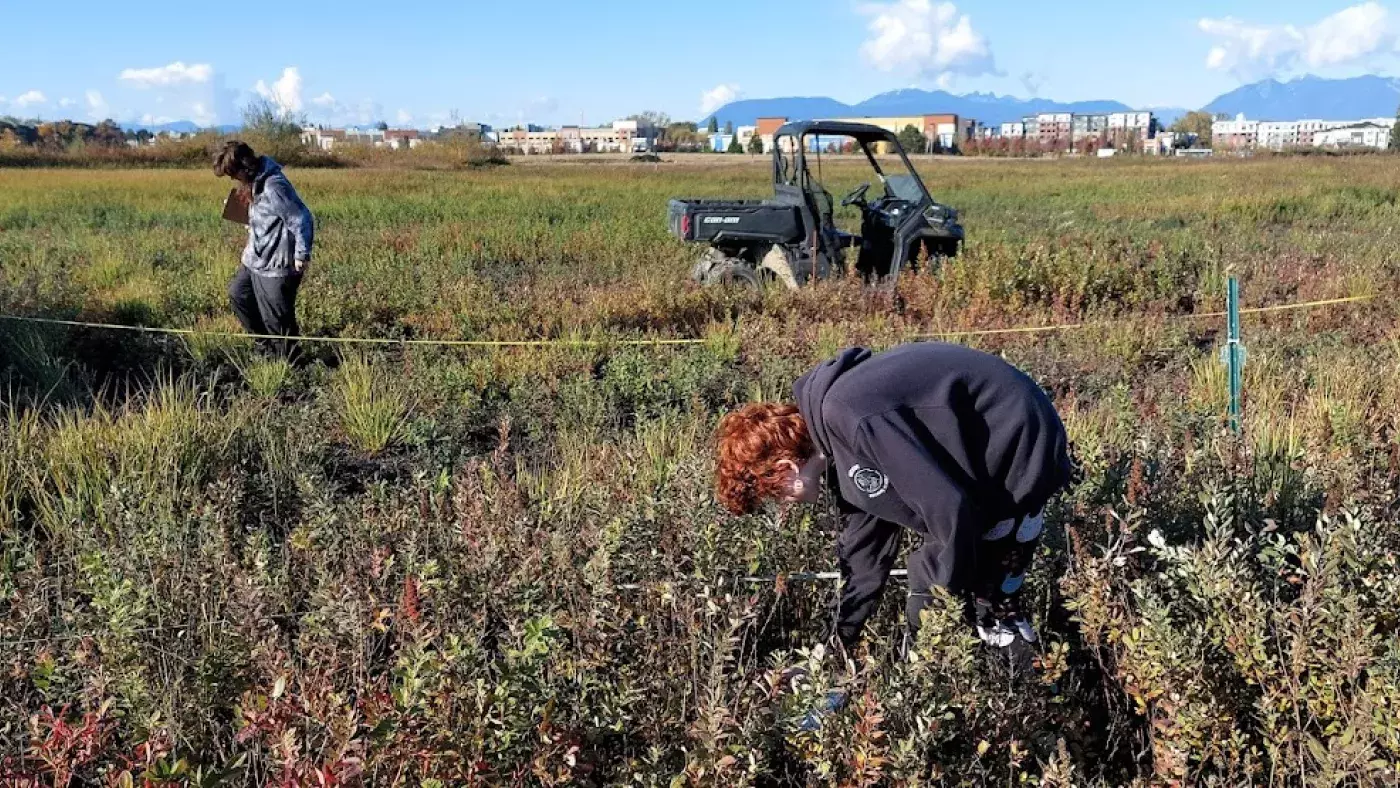

Mowing cessation could promote Sphagnum moss regeneration in the degraded peat bog on Garden City Lands.
Sustainable Agriculture Student Research Project
Effect of mowing on Sphagnum regeneration in a disturbed peat bogRue Badanic, Department of Sustainable Agriculture and Food Systems, 2022 |
Introduction
- Peat bogs are globally important but threatened ecosystems which sequester huge quantities of carbon
- Sphagnum mosses are keystone species
- The Greater Lulu Island Peat Bog in Richmond BC was degraded and fragmented by settler activity; one extant piece is the Garden City Lands Peat Bog (GCLPB)
- Restoration efforts are underway at the GCLPB but Sphagnum populations remain low
- The bog is mowed every year to manage invasive trees, but this may have unintended consequence
- This research was established to assess the impacts of mowing on Sphagnum regeneration
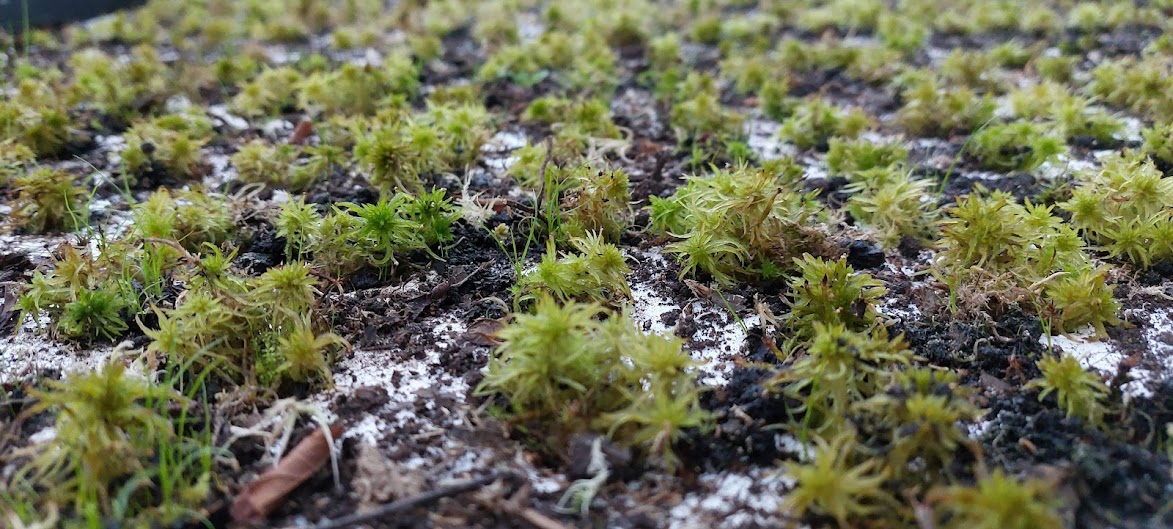
Figure 1. Sphagnum mendocinum propagation at the KPU Farm on the Garden City Lands.
Methods
Location: Garden City Lands, Richmond B.C.
Treatments
- Randomized complete block design with 24 6 x 6 m plots established in 2019
- 12 plots have been mowed every fall, while the other 12 have been undisturbed
Data collection
- Data collected in fall 2022 prior to mowing
- Soil moisture was measured at 0-20 cm depth using a soil moisture meter
- Sphagnum was quantified using 2 transects/plot
- Length of intercepted Sphagnum was recorded
- Intercepted Sphagnum was rated for density and vigour
- Length, density, and vigour were combined into Sphagnum Regeneration Index (SRI)
- Statistical analysis: paired samples t-test
Statistical analysis: Paired sample t-test
Results
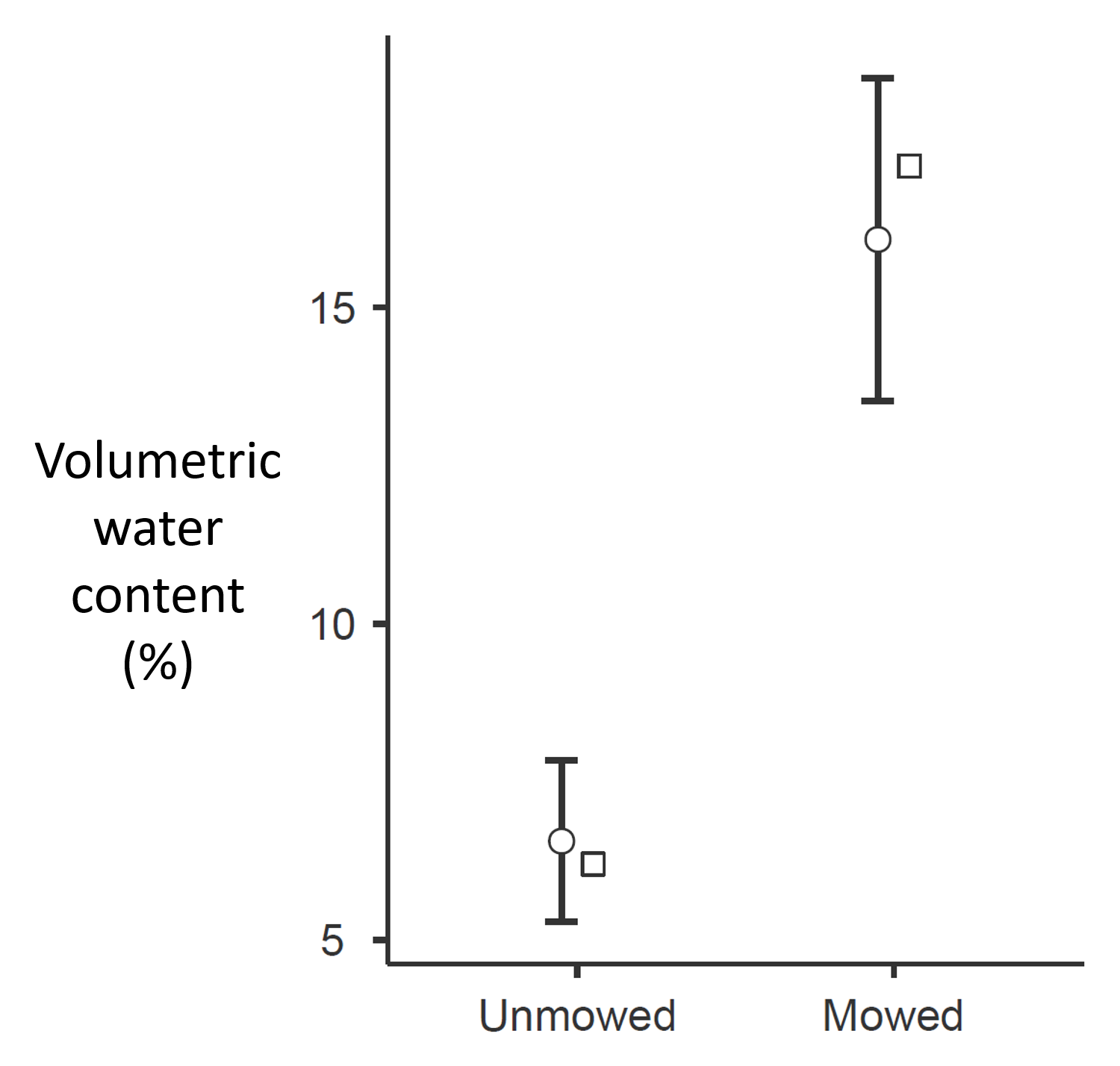
Figure 2. Soil moisture in plots that were unmowed between 2018 and 2022 vs. plots mowed in fall 2019, 2020, and 2021. Error bars denote 95% confidence interval around mean (n = 12). Small squares show medians. Treatments differ significantly (t-test, p < 0.05).
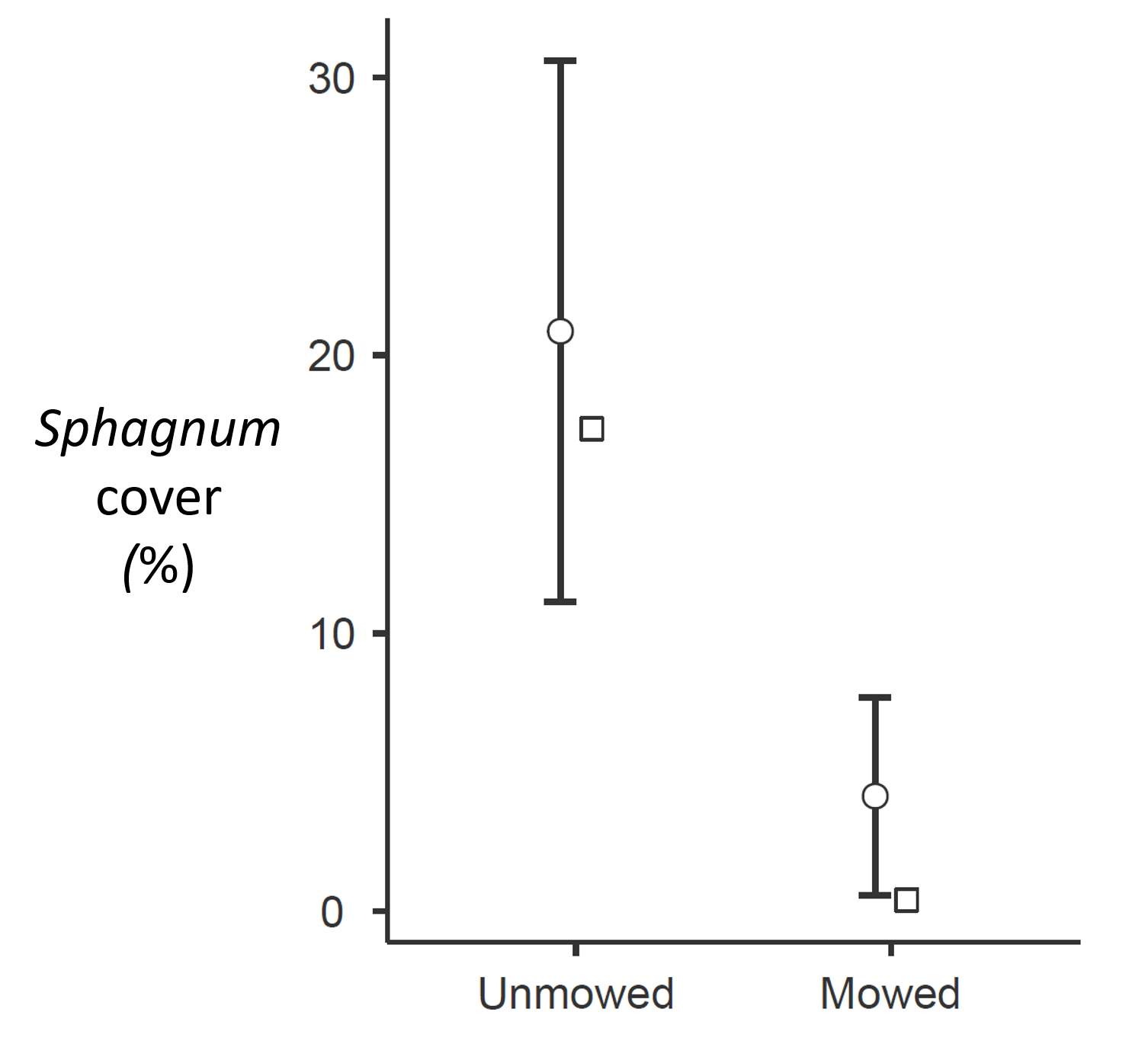
Figure 3. Sphagnum cover in plots that were unmowed between 2018 and 2022 vs. plots mowed in fall 2019, 2020, and 2021. Error bars denote 95% confidence interval around mean (n = 12). Small squares show medians. Treatments differ significantly (t-test, p < 0.05).
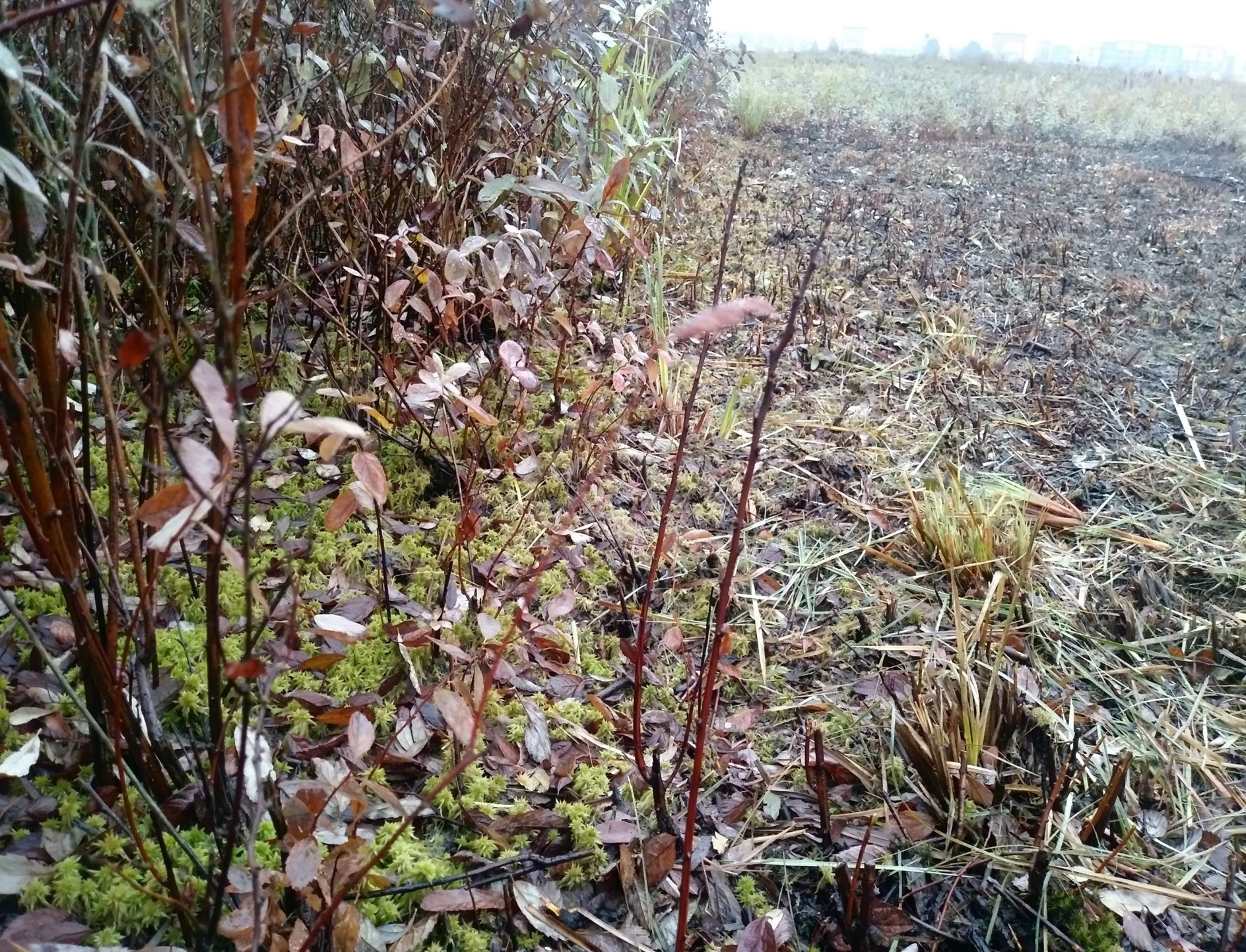 Figure 4. Sphagnum moss can be seen growing beneath unmowed hardhack (Spiraea douglasii) at the margin of an unmowed plot. The mowed area on the right shows no Sphagnum.
Figure 4. Sphagnum moss can be seen growing beneath unmowed hardhack (Spiraea douglasii) at the margin of an unmowed plot. The mowed area on the right shows no Sphagnum.
Discussion
Ceasing mowing may help Sphagnum regeneration (and perhaps by extension the overall ecosystem restoration effort) in areas of low invasive tree pressure
Various factors could have contributed to increased Sphagnum regeneration in unmowed plots:
- Increased shade/protection from UV
- Higher relative humidity
- Decreased air circulation
- Reduced physical disturbance of Sphagnum
Lower soil moisture likely resulted from increased transpiration from the maturing shrub canopy. This finding is notable, as it shows soil moisture is not necessarily the determining factor in Sphagnum regeneration
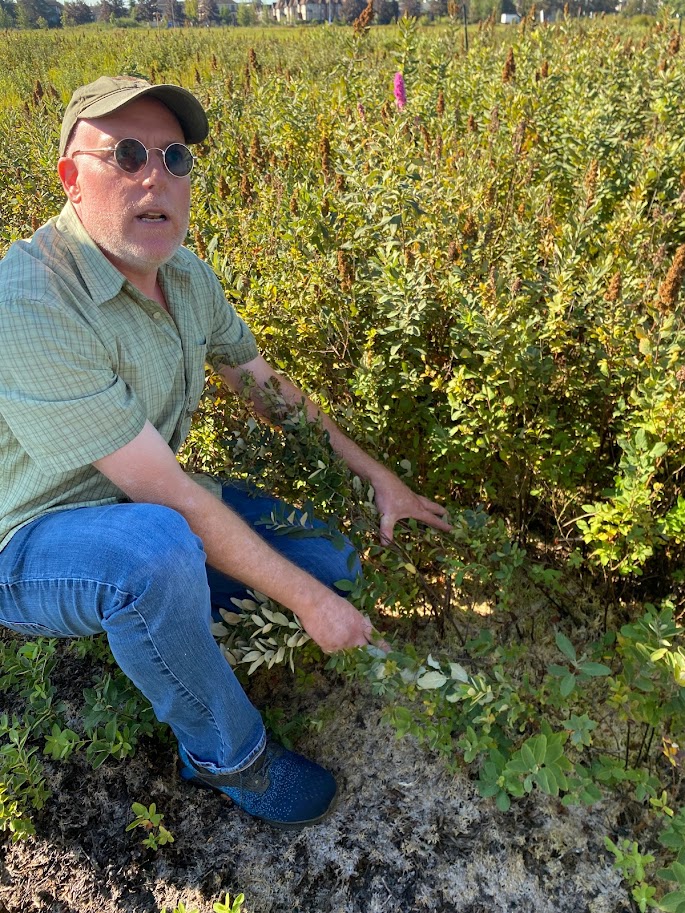
Figure 5. Dr. Michael Bomford shows Sphagnum surviving in an unmowed plot (background) while dessicating in a mowed plot (foreground), September 6th, 2022.
Acknowledgments
Thanks to:
- Dr. Michael Bomford for project conception, guidance, set up, and maintenance
- Jordan Roper (BAS '20) for assistance with initial setup
- Elena Bomford-Moore for assistance with data collection
- The Garden City Conservation Society for project conception and for advocating for GCLPB preservation
- The City of Richmond for GCLPB maintenance, conservation, and for approving this experiment
